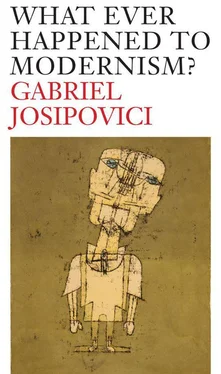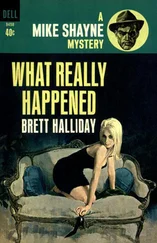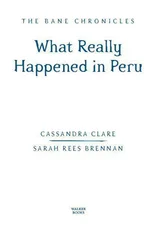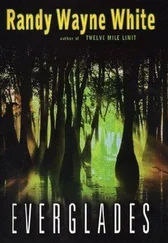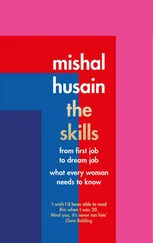In the later portions of his book Kierkegaard explores ‘the despair of not wanting to be oneself’ as well as ‘the despair of wanting in despair to be oneself’. Not surprisingly, he finds confirmation of his insights not in other philosophers, who have rarely recognised the unfathomable complexities of the self, but in the poets, and especially in Shakespeare. Not Hamlet , this time, but Macbeth . ‘It is a psychological master-stroke’, he remarks, ‘that Shakespeare has Macbeth say (Act III, Scene 2): “Things bad begun make strong themselves by ill.” In other words, sin has an inner consistency and in this consistency of evil it also has a certain strength.’ And again, quoting the lines in Act II, Scene I, ‘For from this instant [the murder of Duncan] there's nothing serious in mortality: All is but toys: renown and grace is dead.’ ‘What is masterly is the double stroke in the final words (renown and grace)’, he comments. Here Kierkegaard is drawing attention to the brilliance with which Shakespeare, in three words, conveys Macbeth's loss of both public and private realms, the older, Homeric realm of kleos , fame, honour among one's peers, and the newer, Christian realm, in which one is alone before God, on whose grace one's eternal life depends.
Though Kierkegaard sets out The Sickness Unto Death as an argument built up step by step, it is difficult, unless perhaps one is his kind of Christian, to follow it as such. Rather, it seems to me, the book is a compendium, an encyclopaedia of the sickness that has befallen man in the nineteenth century. On every page there are remarkable formulations, worth any number of books on Romanticism or Modernism, such as: ‘If one wants to compare running astray in possibility with the child's use of vowels, then lacking possibility is like being dumb. The necessary is as though there were only consonants, but to utter them there has to be possibility.’ Does this not provide us with a way of grasping the mixture of silence, confusion and despair evident in so many of the greatest nineteenth-century novels — Michael Kohlhaas, Madame Bovary, The Devils ? In fact, as we will see, whatever aspect of Modernism we look at, Kierkegaard will be an invaluable guide.
4. I Heard The Murmur And The Murmuring Sound
But before we turn to Modernism proper it may be useful to take a slightly more extended look at an artist working in the heyday of the French Revolution. It is important to do this to give flesh to what might seem too abstract and general, just as we turned to Dürer, Rabelais and Cervantes to anchor the discussion of the sixteenth-century ‘disenchantment of the world’. Wordsworth was born in the same year as Beethoven, 1770, and is perhaps, like him, so remarkable an innovator just because he was still rooted in the eighteenth century. He has much to teach us about the paradoxes of the freed imagination, that poisoned chalice passed on from Romanticism to Modernism. Precisely because he is not usually seen in this light he may help us get away from the clichés that everywhere impede a proper understanding of Modernism. At the same time I want to try and show that not just music and poetry but all the arts were profoundly affected by the changed climate of the last years of the eighteenth century, and so following the lead of one of his finest critics Joseph Leo Koerner, I propose to bring in the paintings of Caspar David Friedrich whenever it seems relevant to do so.
Part of the problem of getting to grips with Wordsworth and Friedrich is that both of them seem early on to jettison the notion of genre. A genre is a bit like a family: when you are with your family you do not have to explain who you are each time you enter a room; you are taken for granted. But families can seem constricting as well as enabling, and a moment comes when confidence in genre starts to wane. We have already seen this at work in the emergence of the strange new productions of Rabelais and Cervantes, and we have seen Cervantes playing with the whole business of the genre of the Prologue. But if we want a symbolic moment in the eighteenth-century perception of genre to mirror 14 July 1789, then we have it in Dr Johnson's criticism of Milton (in his Life of the poet, 1779) for choosing to express grief at the death of his friend Edward King in the form of a pastoral elegy. ‘ Lycidas ’, says Johnson in his magisterial way,
is not to be considered as the effusion of real passion; for passion runs not after remote allusions and obscure opinions. Passion plucks no berries from the myrtle and ivy, nor calls upon Arethuse and Mincius, nor tells of rough satyrs and fawns with cloven heel . Where there is leisure for fiction, there is little grief.
At this point it is clear that genre has come to seem, like aristocratic privilege, a false imposition rather than a natural condition. The subtitle ‘epic’ or ‘comedy’ or ‘pastoral elegy’ had prepared readers or spectators for what they were about to experience and helped the writer enter his subject and establish an agreement with the reader. Johnson, that great classicist who nevertheless was also open to changing conditions, would have none of it. Like Kierkegaard's young man, what tradition has to offer seems to him false and no longer to chime with how things are. And this is even more true of Wordsworth and Friedrich, who were, after all, born a full sixty years after Johnson.
Geoffrey Hartman has noted of one of Wordsworth's earliest poems, ‘Lines Left upon a Seat in a Yew-Tree’, that ‘its value … does not seem to depend in any way on the recognition of the species to which it may belong’, and later in the same essay he argues that ‘Wordsworth's form appears to be self-generated rather than prompted by tradition; and the greater the poem the clearer the effect.’ Koerner, for his part, poring over the two little paintings sometimes called ‘Aus der Dresdner Heide I and II’ (From the Dresden Heath I and II), comes to the conclusion that
each picture depicts a radically unremarkable nature, purged of human meaning and therefore of any clear relation to yourself, within a composition so centralised and intensely focused that it appears endowed with a quite particular and momentous significance. This significance eludes you, and you stand before the pictures as before answers for which the questions have been lost.
Koerner places this problem in the context of art history:
Before Friedrich, pendant canvases like ‘From the Dresden Heath I and II’ would have been linked together as episodes in legend or history, as distinct stages within a natural cycle (Seasons or Times of the Day), as examples of discrete types of landscape (heroic, pastoral, elegiac, etc.), or as natural analogues to differing human characters or qualities (the Four Humours, the Five Senses). Each image would correspond to a separate category within a system whose perimeters coincide with the whole of nature humanity … Friedrich's two canvases, on the other hand, are paired as exemplary moments within a single continuity of experience: the artist's personal Erlebnis [experience] of landscape.
It's uncanny how easily Koerner's words about the German painter apply to the English poet. For from the start Wordsworth's best poetry defies genre because it is not about this or that but is rather the encapsulation in words of an event which has filled him with wonder and which remains — for him and for us — mysterious, incapable of being absorbed into any system. A good example is the little poem ‘A Night-Piece’, written in the richly productive year of 1798, though not published till 1815.
The poem begins with what seems like pure description:
The sky is overcast
With a continuous cloud of texture close,
Читать дальше
